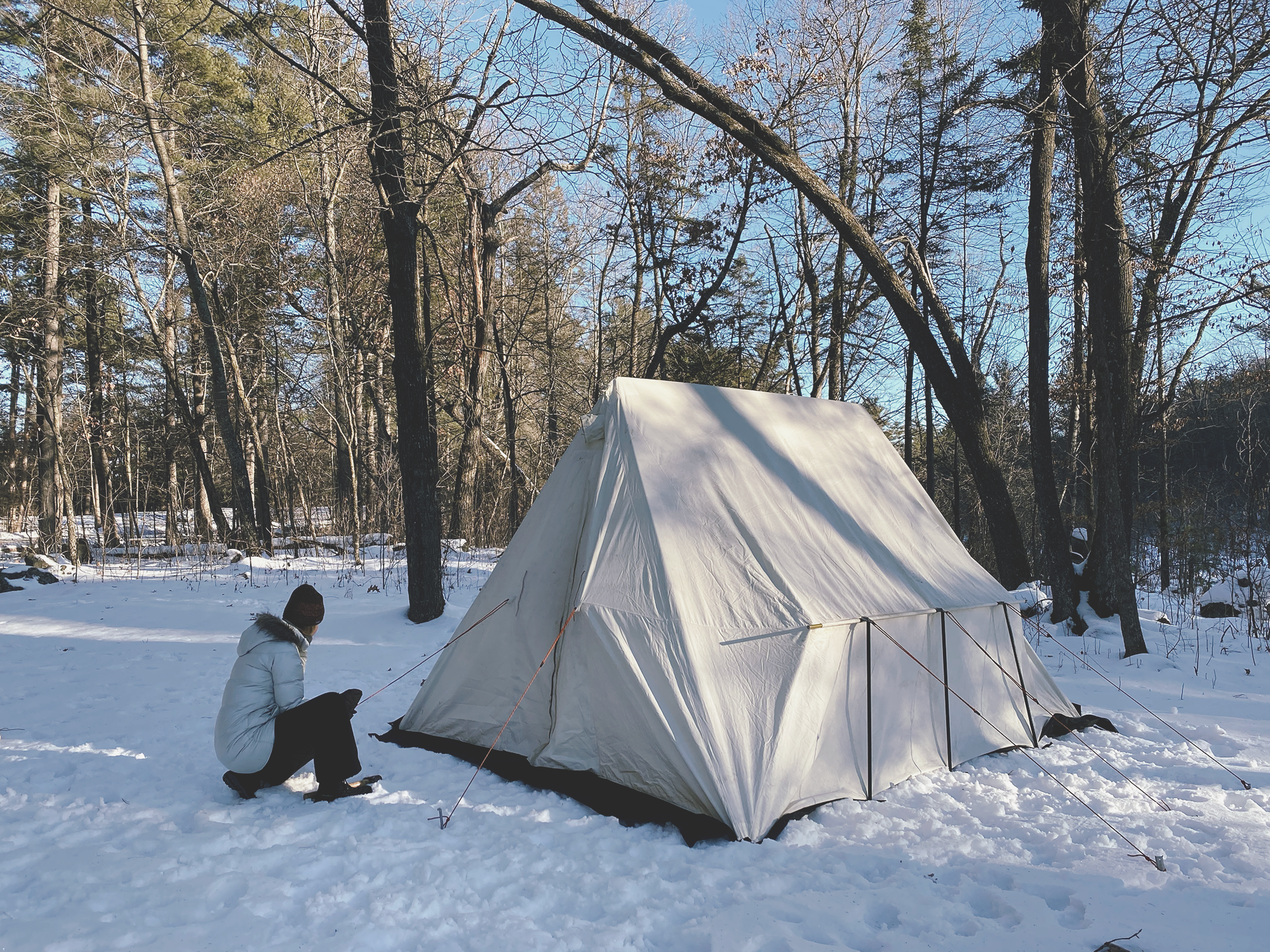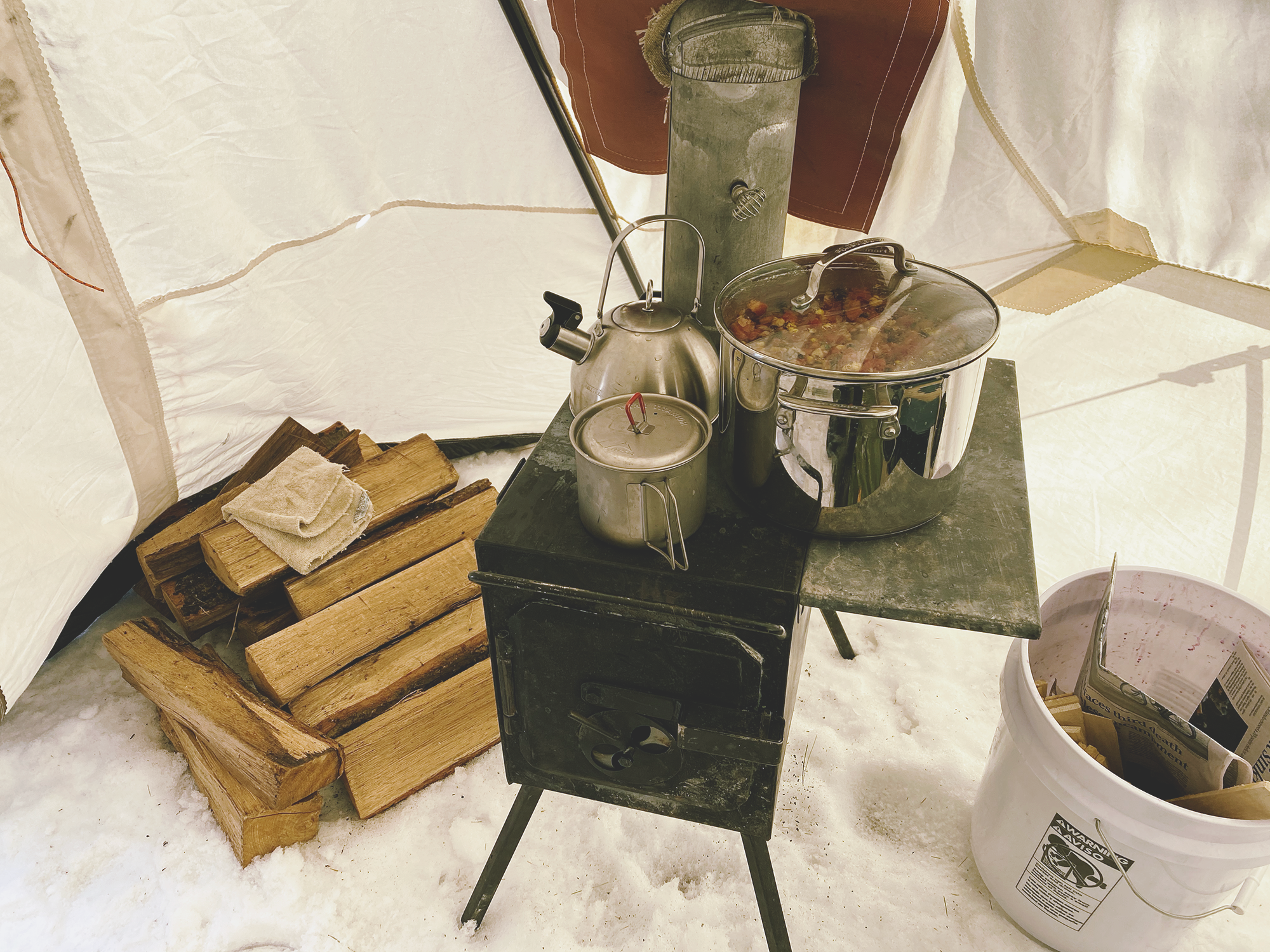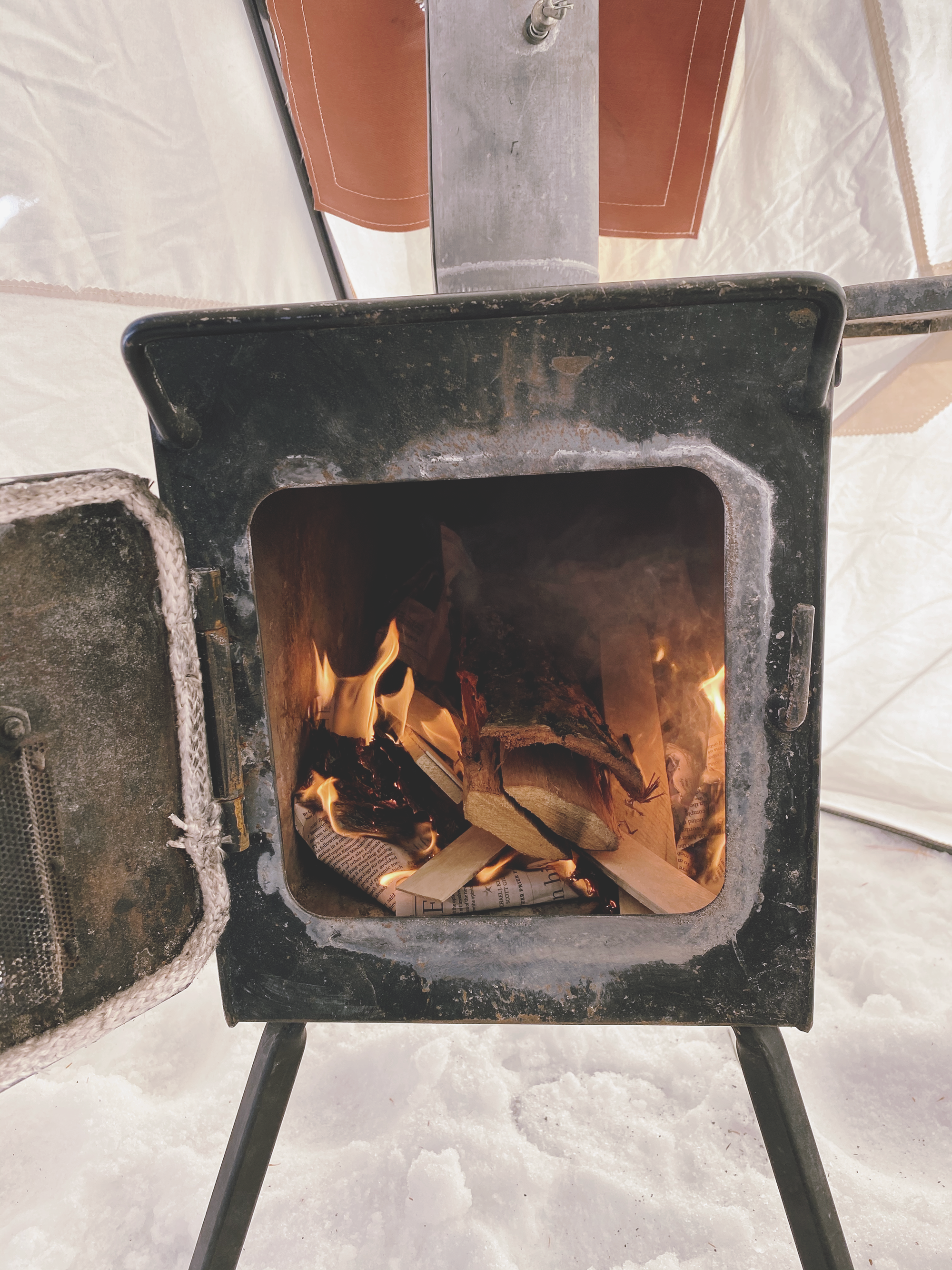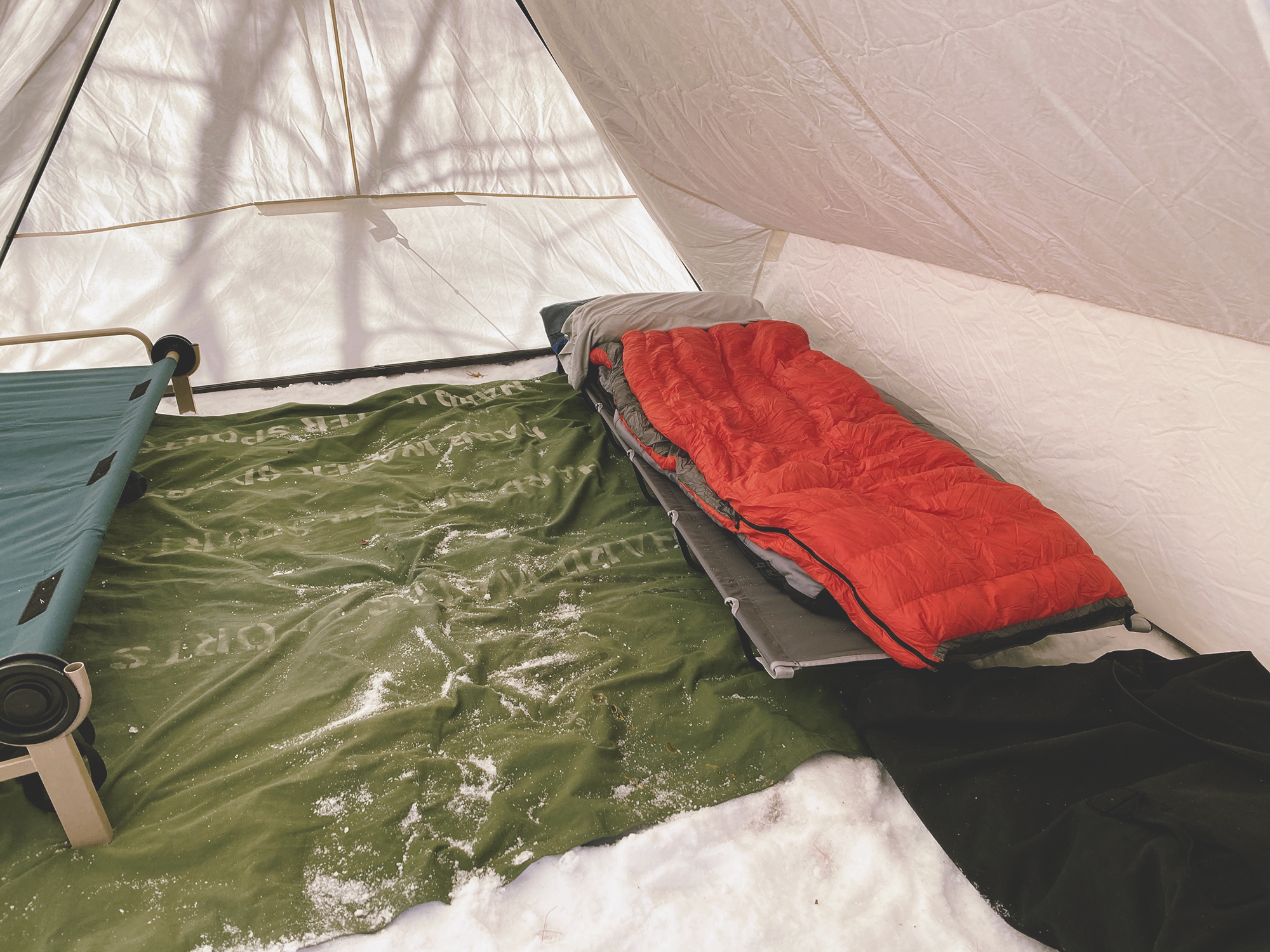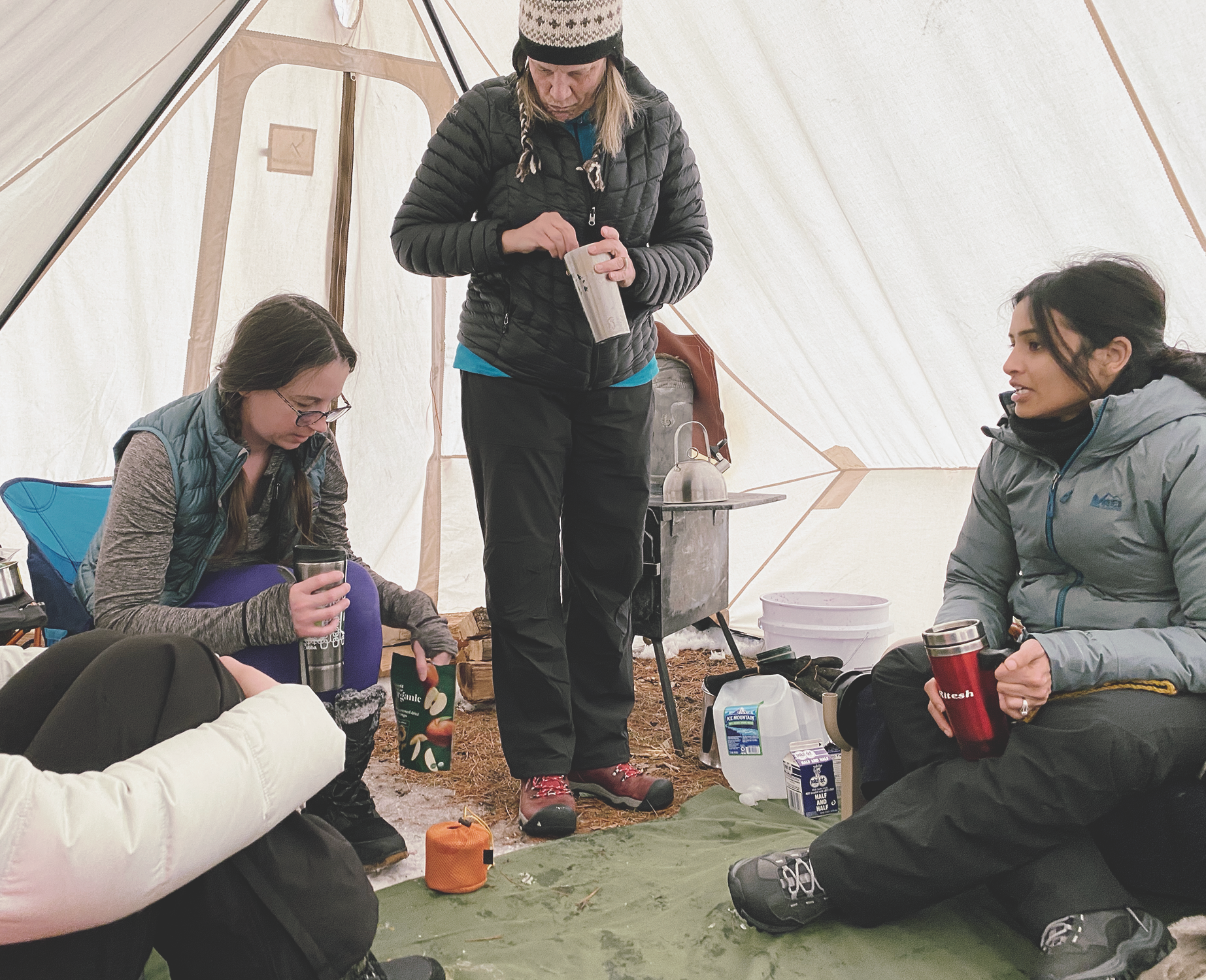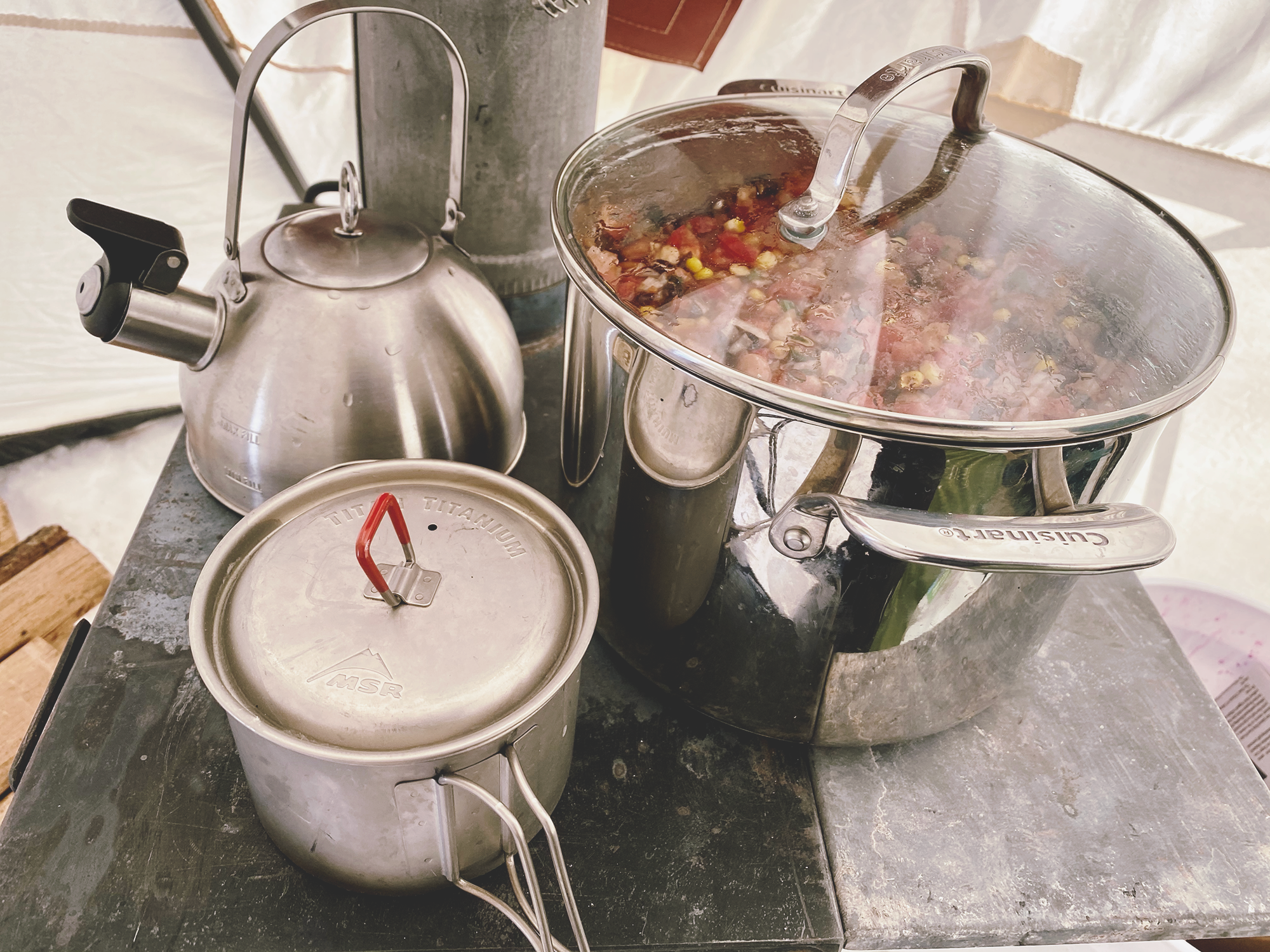Hot Tent Camping 101
We sat near the hot stove, playing cards while tucked away in a canvas sided tent under the stars. The small stove kicked out heat and you wouldn’t have known it was -10º outside. The idea of camping in the winter may feel intimidating to you, but we think it’s one of the most comfortable ways to pass winter. You can do it too!
We’ll share the basics of how to winter camp in a heated tent. Plus, we’ll provide some tips, tricks and resources for you so that you can enjoy your own, warm winter adventure.
Hot tent village we set up at group campsite at a local, state park in Minnesota. Tents range from 2-4 person.
Tent Sweet Tent
Made of flame retardant fabric and aluminum tent poles, they’re relatively easy to set up. They’re generally made of canvas for cold weather conditions. For warmth, many are designed to include a wood stove. Set up takes about a half hour and there are rental options throughout the state of Minnesota for you to try one. They can also be purchased from cottage vendors, but they are an investment. That said, you want a reliable shelter with the sub-zero temps! We suggest using them with heavy duty, waxed canvas flooring, which sometimes come with tents as an added accessory. Be sure to ask! It adds a layer of warmth to the tent. Tents weigh around 30 pounds depending on size. Most will hold anywhere from 2-6 adults.
Setting up a 3-4 person tent with stove only takes about 30 minutes (faster if you’ve got help).
Where to Camp
Car camp with a hot tent at your local state park or your friends property. Haul your gear in to a more remote site by sled or backpack. Choose a location that is protected from the wind, preferably has a water source or enough snow to melt water. If you go local, it’s pretty easy to haul in a few jugs of water. Exposure to the sun will help heat up the tent faster as well. Consider amenities that may be open like state park bathrooms, pit toilets, and firewood options when figuring out where to go.
How to Pack
It is easiest to haul your gear using a heavy duty sled or pulk, as it’s often referred to. You can make your own sled system with a harness or you can buy a pulk sled from a regional outfitter. This allows you to carry more and heavier items. Use duffles, plastic bins or wood boxes for packing gear. Use a water proof liner or garbage bag for anything you don’t want wet.
How to stay warm
Haul in pre-cut firewood on your sled or cut down your own dead and dry wood. Some places will allow you to chop down wood, but always be sure to check first. We like to carry in a bucket with dry tinder and kindling for ease of fire starting, but you could do that on site as well. Always bring matches winter camping as fuel lighters, like Bic brand may fail in cold temps. Your stove will have a damper and an air intake. Spend a little time learning how those work to manage and maximize your heat.
Sleeping
We recommend using lightweight cots in the heated tent. You’ll stay warmer off the ground. If that isn’t an option, you can sleep on the floor using 2 sleeping pads nested together. Add a wool blanket below all sleeping bags for even more warmth. We recommend you use a sleeping bag that is 10-20° warmer than the temps you expect to camp in. Some people stoke the fire overnight while others fill it with wood and let it go out while they sleep. Be extremely careful of carbon monoxide and keep tent vents open.
Wear wool-blend top and bottom base layers as pj’s. Keep a puffy jacket nearby in case you get cold. Sleep with wool-blend socks and a lightly insulated winter hat. For added comfort fill a Nalgene bottle with hot water and toss it into your bag before bed. Lastly, eat a high calorie snack right before bed to stoke your inner wood stove.
Eating and Drinking
The bonus of winter camping is that you have natural refrigeration! You can bring anything you like to eat, you’ll just have to protect cold sensitive foods like fruits and vegetables. We recommend preparing as much of your food in advance for ease of cooking in camp. So cut, chop, measure and mix before you go. One pot meals are easiest and most anything you can cook at home on your stove can be cooked on the wood stove. Just be aware the space is limited. Pack in high calorie food for days spent exploring and staying warm.
Unless you have access to a faucet or water source (ice choppers work great on lakes), you’ll likely need to melt your own water. We suggest you bring a good sized teapot and continually keep snow melting on the stove. Or, haul in your own jugs water if your journey isn’t far.
Bathrooming
If you camp locally or at a state park, you may have access to bathrooms or pit toilets. If you’re headed into the backcountry you’ll need to carry wag bags for packing out human waste, or plastic dog poop bags or similar. It will be incredibly challenging to dig a hole and dispose of your poop properly. Pee a little ways from camp and cover it up with fresh snow.
Pulk sleds loaded with a mix of wooden boxes (wannigan’s) and duffle bags. Sled in the back is a DIY and the sled in the front was purchased from a MN vendor.
Handy Tips and Tricks
Hang 10’-25’ of cord between the tent poles. This becomes a handy place to hang gloves to dry, camp lantern(s), socks, etc.
Pack down snow using your snowshoes or boots where you plan on setting up your tent.
Pack 2-3 battery or solar powered camping lights that can hang from the tent poles or cord.
Place a small rubber mat inside the tent entrance as a place to store boots and as an anti-slip spot. Spots near the stove can get icy.
A small camp table or storage bin is handy for eating, storage or card games.
Fill a 5 gallon bucket with tinder, kindling, newspaper, matches and fire glove. Keep near the stove for easy fire control.
Bring a small table for easy organization.
Pre pack and cook as much food as you’re able for ease of prep.
Bring winter booties/slippers for moving around the tent and bathroom breaks.
Carry a shovel for adding snow around exterior tent edges for insulation or digging out tent pad.
Bring an axe or camp saw for processing wood.
Carry or chop two 6’ poles for stove pipe support, toss in wire to lash poles together.
Check out our recommended group winter camping list and personal packing list (to be used with group gear) and start planning your winter adventure.
Outfitters who rent hot tents in Minnesota
Hardwater Sports, Sandstone, MN
Piragis Northwoods Company, Ely, MN
Sawtooth Outfitters, Tofte, MN
Stone Harbor Wilderness Supply, Grand Marais, MN
Plenty of wood! We’re ready for a cold night.
Disclaimer: It’s your responsibility to plan, research and prepare for your adventures. Some of the information we’ve provided may not be accurate or out of date. We do not receive any compensation for promoting any vendors or products listed here.



